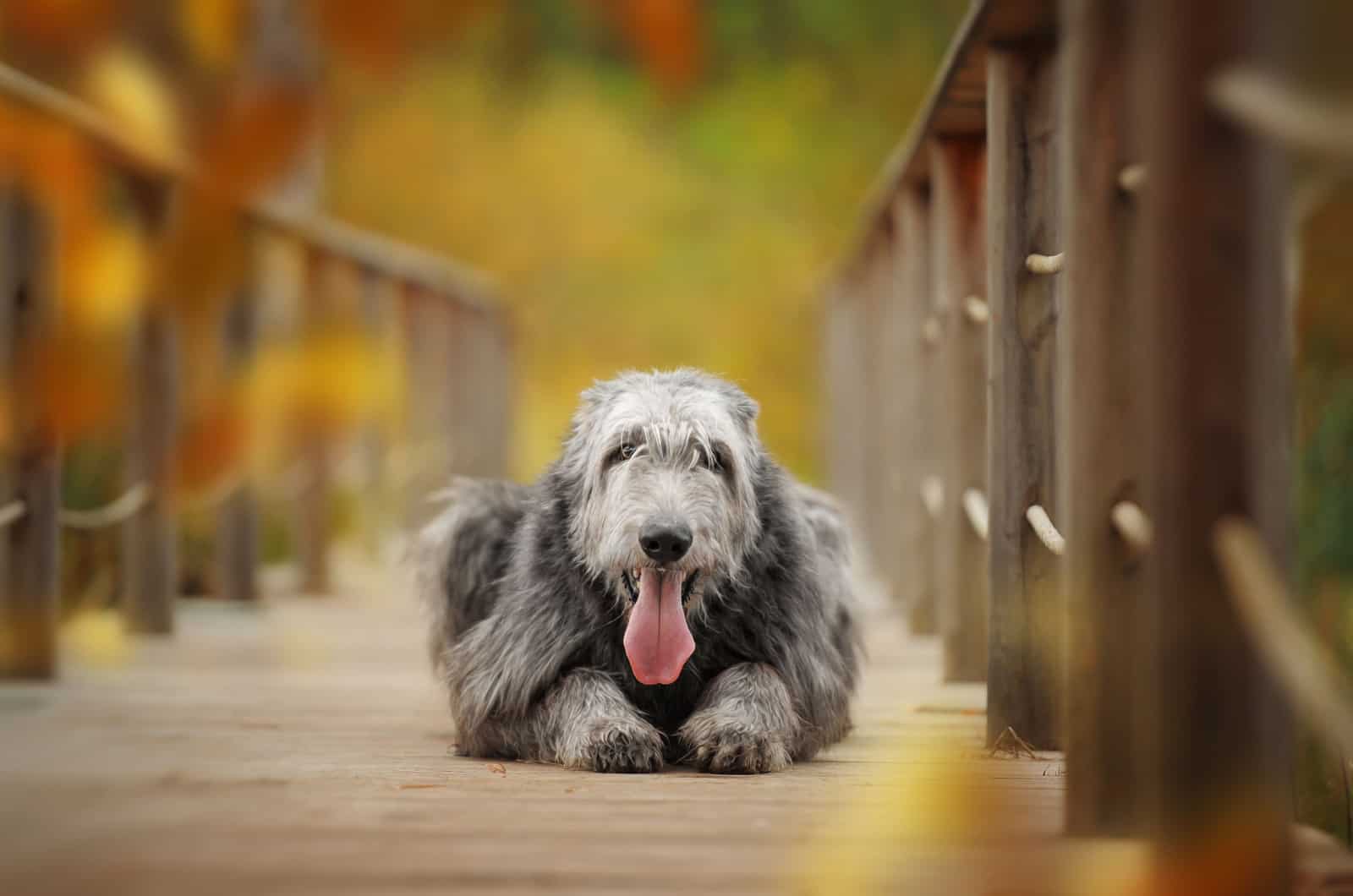Irish Wolfhounds are a gigantic canine breed that was used to hunt wolves, boar, deer, and other wild animals in its history. However, they also make excellent family pets since they are so devoted, patient, and attentive.
With coarse fur and wiry hairs around its eyes and eyebrows, this breed truly has a distinctive physical appearance. But the most famous aspect of its appearance is definitely its size.
Keeping track of your puppy’s weight using the Irish Wolfhound growth chart will help you take care of their long-term health, because you will be able to keep an eye on their development. A puppy that isn’t growing the way it’s supposed to be might be affected by a medical condition, so it’s important to stay on top of it.
It’s reasonable for you to wonder, especially if you’ve only seen them in pictures, how big this breed typically grows. How fast do they grow? How big do they get?
This article will advise you on a variety of topics, including what to anticipate from an Irish Wolfhound’s development, as well as some of the health issues to which they are genetically prone.
Irish Wolfhound Growth Chart
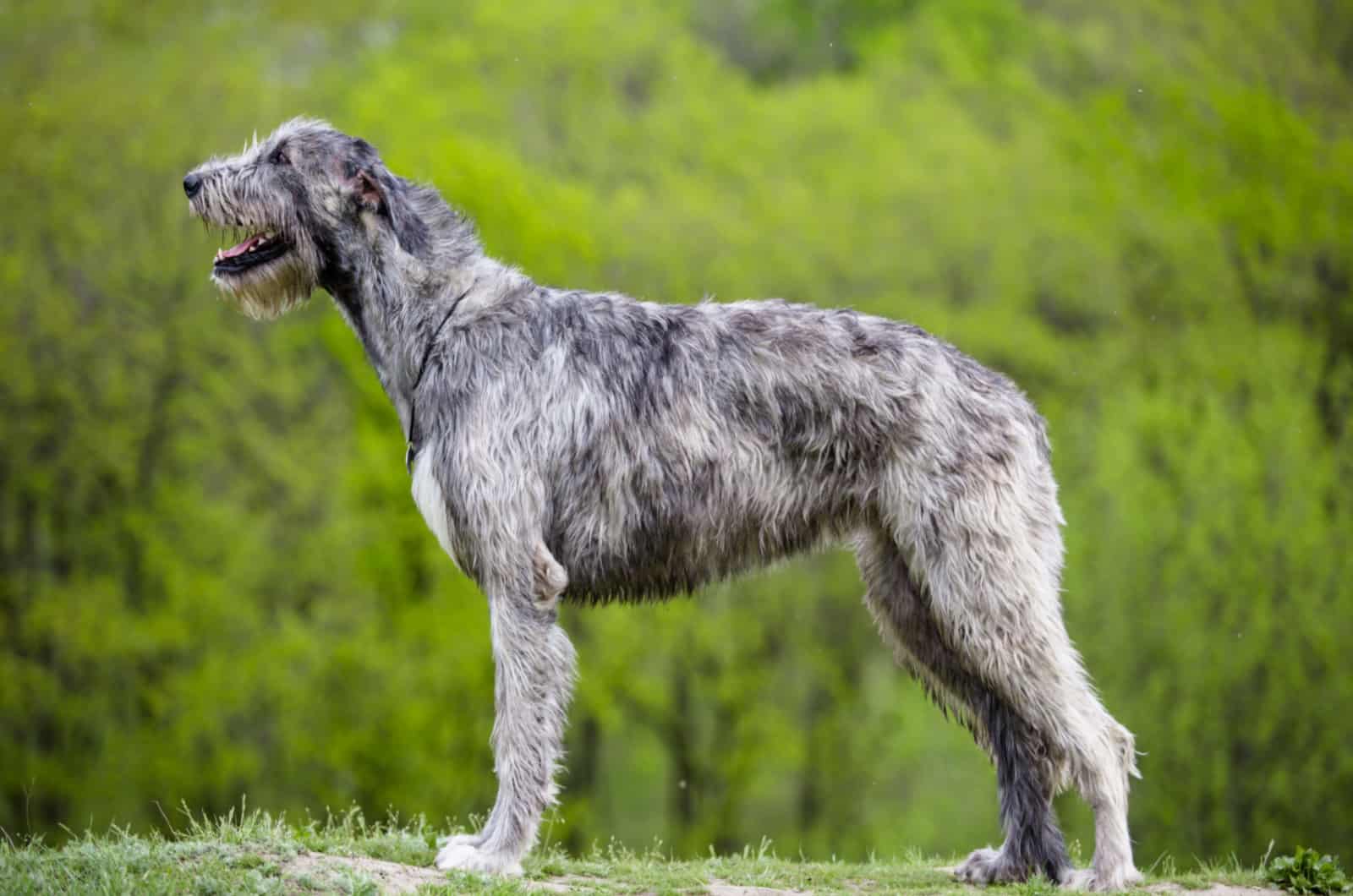
[table id=623 /]
[table id=624 /]
Why Do I Need A Irish Wolfhound Growth Chart?
The observation of a puppy’s growth during those essential early months is one of the most crucial facets of dog ownership. The Irish Wolfhound is a huge breed of dog, and the sheer amount of room that they need to move around is something that you need to plan for.
You can keep an eye on your puppy’s growth and make sure its weight is going in the right direction by using our Irish Wolfhound growth chart as a sort of weight calculator.
Not to mention all the other stuff that you need to pay attention to, like diet, exercise, training, etc. By understanding how big and heavy your Wolfhound should be at any particular age, can utilize this knowledge to plan its diet, living space, and budget.
Budget planning, in particular, is important when choosing to adopt an expensive dog.
When Do Irish Wolfhounds Stop Growing?
At roughly two years old, the majority of Irish Wolfhounds achieve their full height. They might, however, put on an additional inch or two during their second year of life. Typically, they do not attain their full weight until they are three to three and a half years old. As a result, it is quite common for them to appear fairly thin during their second year.
They spend a large portion of their second year acquiring weight and muscle. At roughly three years old, they usually gain a significant amount of weight and begin to bulk up. Since they are often smaller than males, females frequently reach adulthood before males.
How Big Do Irish Wolfhounds Usually Get?
Irish Wolfhounds are mostly famous because of their enormous size, and especially their height.
Usually, boys are bigger than girls, and they typically weigh between 140 and 180 pounds and stand 34 to 35 inches tall. Females are slightly shorter and weigh between 115 and 140 pounds, standing at 32 to 34 inches.
That’s pretty impressive, and it probably makes you think if there is any realistic way that these dogs can crossbreed with other, smaller dogs. Well, they definitely can, as evidenced by this list of 23 gorgeous Irish Wolfhound mixes.
They can even crossbreed with Poodles!
Anyway, back to the subject at hand. Even within the same litter, size differences of a significant magnitude are rather frequent. The presence of both very little and very large puppies in a single litter is not unusual.
Several genetic factors affect the dog’s overall size, and it’s not a given that the puppies will be larger just because the puppy parents are. We’ll go into more depth about these genetic factors later in this article.
Irish Wolfhound Growth Through Stages Of Development
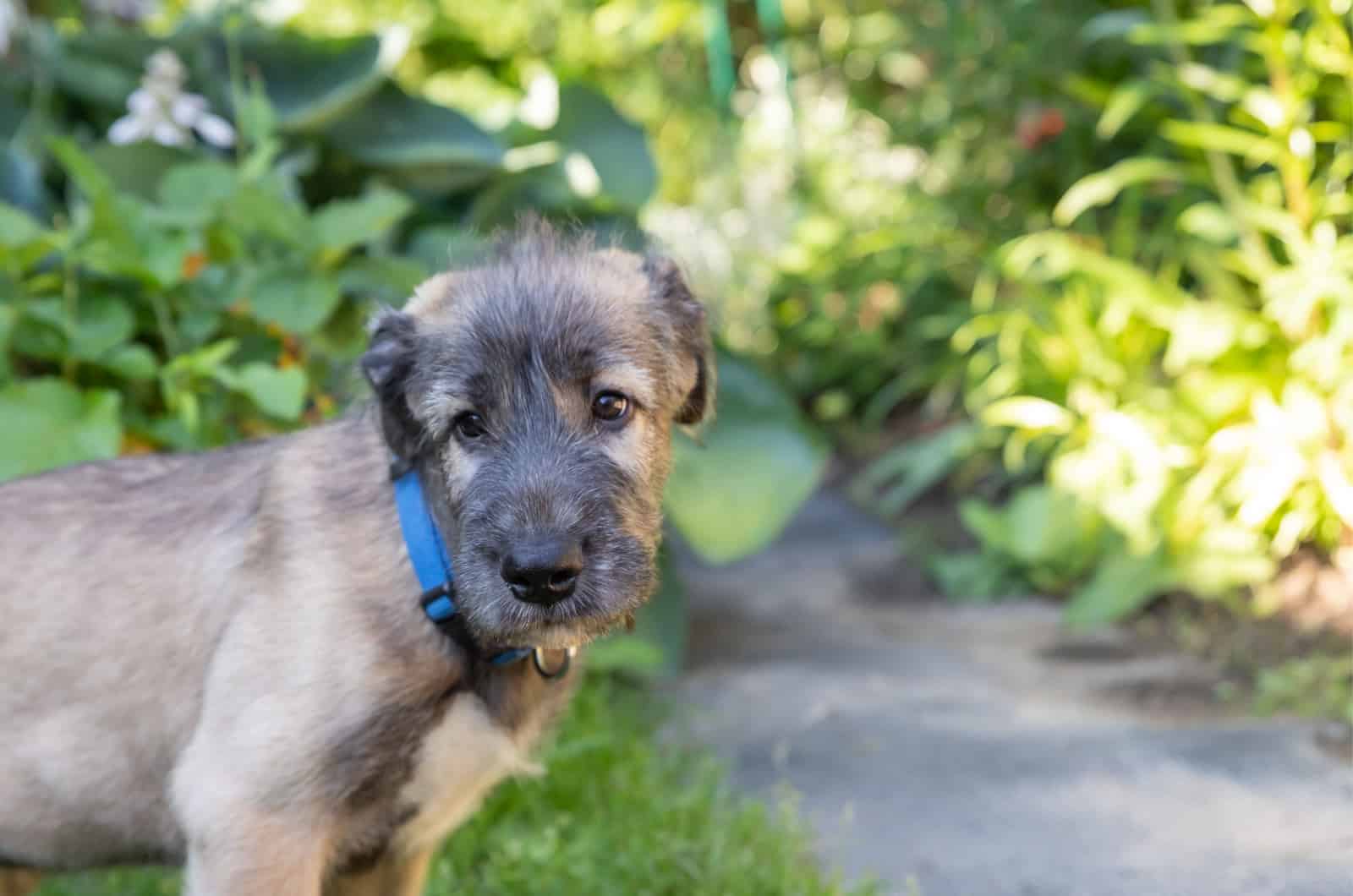
Essentially, the first 18 months of the Wolfhound’s life can be roughly divided into different growth phases. The puppy grows through various physical and mental maturation milestones during each of those stages.
Because every puppy is different, the individual timetables won’t always exactly follow this pattern, but it still provides a great place to start for any dog owner interested in understanding how their Wolfhound develops.
From Birth To Two Weeks
The eyes and ears of a newborn Irish Wolfhound puppy are closed, so they are unable to hear or see anything. The majority of the puppy’s time during this period is spent napping and nursing. They also rely on their mother for heat because they are unable to control their body temperature.
The puppy’s eyes open and the muscles in its forelegs grow stronger during the second week. By the end of the second week, the pup is ready to be dewormed for the first time and breeders will typically go ahead with this procedure before they sell you the puppy.
From Two Weeks To Four Weeks
The puppy will begin standing and sitting up around the time it is three weeks old. Its ears will fully open, and its cute little tail will begin to wag. The puppy will begin engaging and socializing with its brothers and sisters from the litter.
At four weeks, it’s time to start weaning the puppy off its mother’s milk and start introducing some solid food. Make sure to do it gradually so as to not overwhelm the doggy. If you’re not sure that it can chew or digest the food properly, you can try making a mush so that it’s a bit easier.
At this point, you should already have an idea of what kind of diet you want to provide. Whether it’s store-bought dog food, warm home-cooked meals, or even raw meat, the main thing is that it’s nutritious and healthy.
From Four Weeks To Three Months
You should continue with the solid food diet during this period, as the Irish Wolfhound puppy will need a lot of calories to support its growth.
Puppies should begin extensive socialization and potty training at around 12 weeks of age because they can begin to develop a phobia of strange people and environments if they are not properly introduced and acclimated to them.
From Three Months To Twelve Months
The Wolfhound will typically start to lose their puppy-like appearance at this point. This includes losing its baby teeth, although the biting and chewing will definitely not stop.
During this period, both males and females experience their first heat cycle. This might be the ideal time to have your puppy neutered or spayed, but be sure to consult your veterinarian first.
If you choose to fix your dog, it’s important that you do it at the right time, otherwise, you can risk complications in your puppy’s development.
From One Year To Eighteen Months
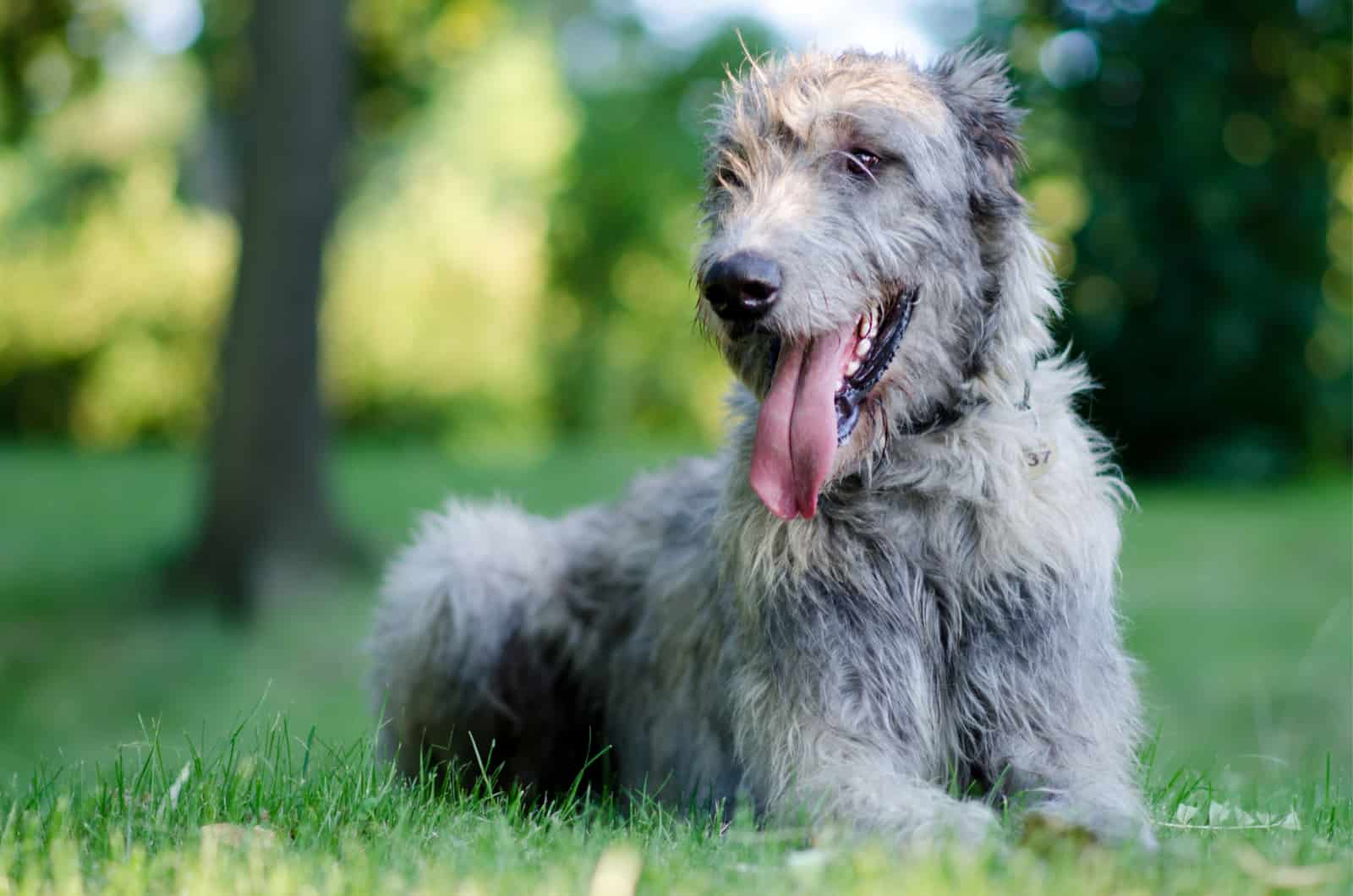
Your puppy is now more energetic and capable of participating in some workouts. The weight and height of your puppy will also be nearing their peak, although some puppies continue to develop after the 18-month milestone.
At this point, training obedience and discipline is still necessary since the puppy will start displaying signs of dominance and wanting to lead the pack.
It would be a good idea to make the jump from puppy food to adult dog food. In order to avoid disturbing your puppy’s tummy or causing diarrhea, the switch should be made gradually. Start with combining the two, then slowly increase the share of adult food until it eventually becomes 100% of their diet.
Adult Irish Wolfhound
Your Irish Wolfhound should be fully mature at this point, in all aspects of its body and mind. It should have reached its full adult weight and adult height, and be able to make decisions based on its experience.
In order to keep your Irish Wolfhound healthy and content for the rest of its life, you still need to provide a lot of love, care, and attention.
Make sure to give your dog nutritious meals that are balanced and have all the essential ingredients, including proteins, fats, vitamins, minerals, and antioxidants.
You also need to maintain a good level of physical activity for the dog, as it will help you maintain its weight within healthy parameters.
Factors That Impact The Growth Of An Irish Wolfhound
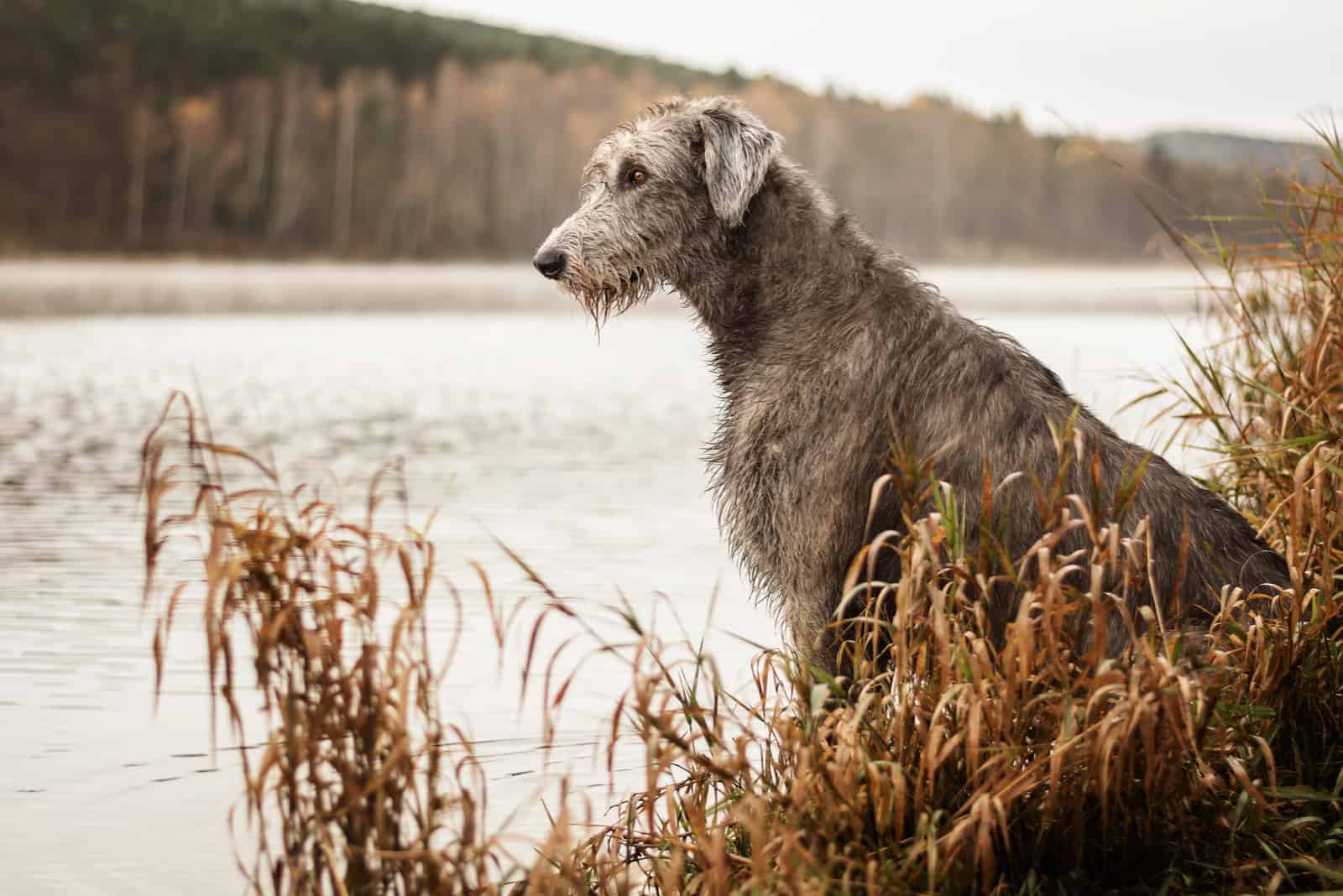
A number of variables affect the final size of each dog. Although Irish Wolfhounds are all large dogs, there are differences between each individual pooch.
Due to two distinct sets of factors—internal and external—some of them are heavier and larger than others. So let’s use this opportunity to explain what those factors are.
Internal Factors
Each and every Irish Wolfhound is born with specific intrinsic traits. You have no actual power over these elements, and you have no genuine way of influencing them.
Even while a dog’s gender or genetic makeup cannot be changed, being aware of key facts about it can help you get ready for what’s to come and make sure the puppy has the best environment possible to develop.
Genetics
Genes impact almost everything, from size and growth to behavior, temperament, and coat colors.
Since no two puppies are exactly the same, growth rates vary among them. Based on their genetic makeup, some puppies may grow more quickly while others may grow more slowly. Additionally, some genetic disorders can have an impact on a puppy’s growth.
Irish Wolfhound puppies won’t necessarily grow up to be the same size as their parents, but they probably won’t be drastically different, either. There isn’t a clear formula to predict these things for each individual pup, and that’s why the puppy growth chart is so useful.
Gender
Another element that influences a puppy’s growth is its gender. Irish Wolfhound females are typically a little bit lighter and shorter than their male counterparts.
If you take another peek at the weight chart from the beginning of this article, you’ll see that there is a clear point in their development when males start growing visibly faster than females. Typically, that point is around six to eight weeks of age.
Also, female Irish Wolfhound puppies will usually finish their growth process sooner than males.
External Factors
With the use of diet and exercise, your Wolfhound’s weight can be controlled and carefully managed. A weight chart is meaningless if you aren’t doing anything to ensure your dog maintains a healthy weight.
Giving it a high-protein diet and lots of energizing activity will help you achieve this.
Food
All Irish Wolfhound dogs should be given a healthy diet, although the diets of pups and adult dogs differ.
Puppies require three to four feedings a day, and their diets should be higher in fats and proteins than those of adult dogs, as well as a bigger amount of calcium, which they need for the growth and strengthening of their bones and joints.
The frequent feedings are there to support the ongoing development of their internal organs, muscles, bones, teeth, and fur, as well as their mental development.
The diet of an adult Irish Wolfhound should have fewer calories, fewer fats, less protein, and optimal levels of phosphorus and calcium. They should be fed twice daily.
You can check out our Irish Wolfhound feeding chart for more information on maintaining a healthy diet for your gentle giant!
Exercise
Puppies under the age of six months old shouldn’t engage in any physical activity besides playing. Since your puppy’s bones are still fragile and they are still growing quickly, too much exercise could lead to skeletal problems.
You can start taking it on short walks when it’s a 6-month-old puppy, and as it becomes older, you can increase the duration and frequency of the walks.
Larger dogs typically have lower energy levels than smaller dogs, so they don’t need as much activity. To stay active and healthy, an adult Irish Wolfhound needs to exercise for 20 minutes, two times a day.
Irish Wolfhound Growth Chart FAQ
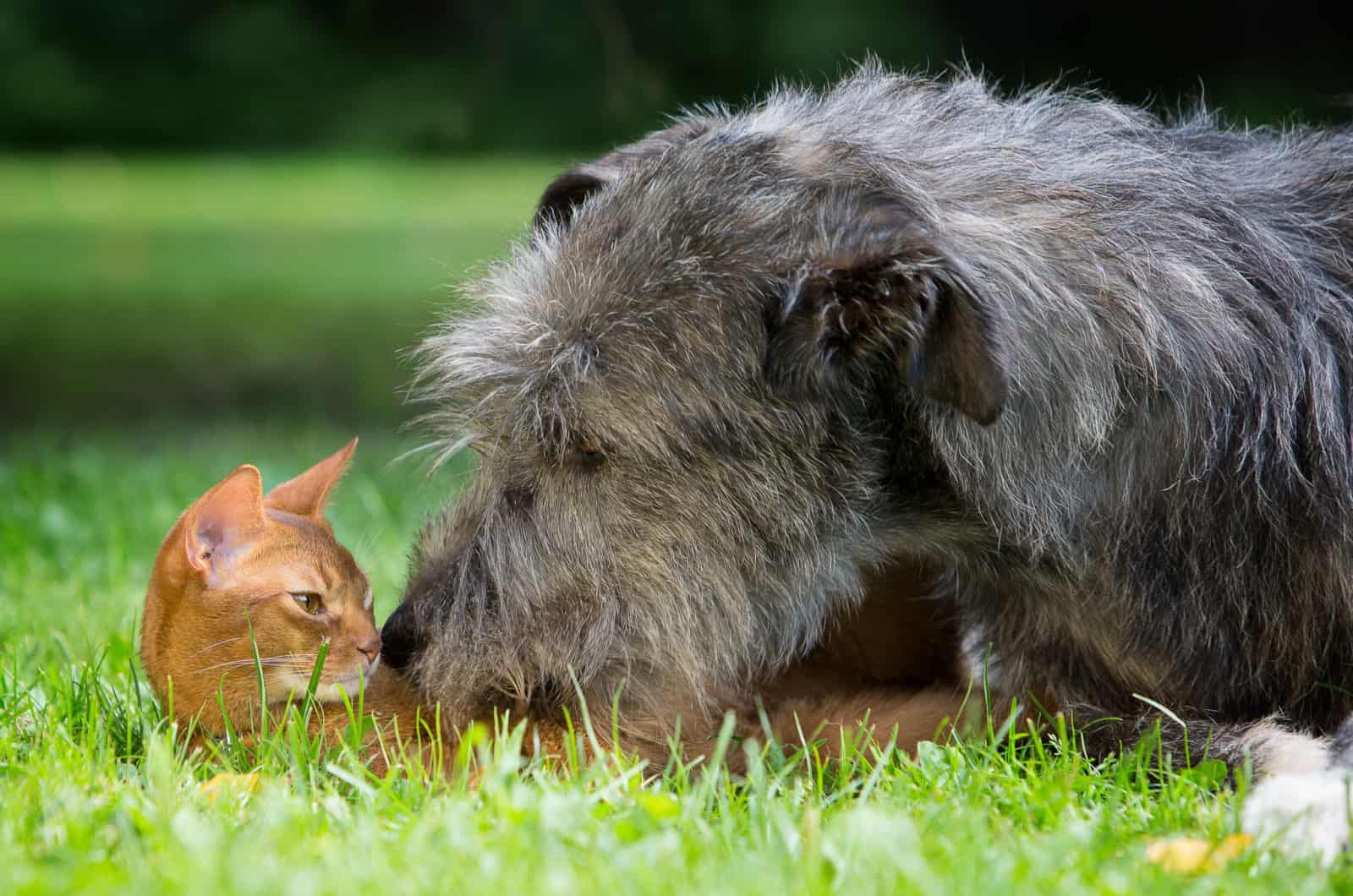
The Irish Wolfhound growth chart and all the other details we have included in this post should have helped you understand what to anticipate as your puppy develops.
Nevertheless, there are some issues that we haven’t specifically answered. We decided to gather all of the frequently asked questions about this subject that we found online in this segment of the post. If you don’t have the time to read the entire article, it’s perfect for quick access.
How Do Spaying And Neutering Affect The Growth Of An Irish Wolfhound?
Male dogs’ testicles are surgically removed during neutering, and female dogs’ ovaries are surgically removed during spaying.
Your Irish Wolfhound should undergo these operations between six and twelve months of age.
It reduces aggressive behavior, inhibits male Irish Wolfhounds from reproducing, and prevents female dogs from becoming pregnant, among other health advantages of neutering and spaying.
However, early spaying or neutering can limit your Irish Wolfhound’s growth since the growth plates are still open, which can cause joint diseases including hip and elbow dysplasia.
Read more: The Truth: How Will My Female Dog’s Behavior Change After Spaying?
What Are Some Health Issues Related To The Weight Of My Irish Wolfhound?
An Irish Wolfhound has an average lifespan of six to ten years. These dogs, like all purebreds, are more susceptible to a number of genetic diseases, such as Dilated Cardiomyopathy, Von Willebrand’s disease, osteosarcoma, bloat, and others.
A lot of these issues can be discovered by x-rays and similar procedures, so it’s important that breeders do detailed checkups on all puppies while they are still young. Early detection is always half the battle when it comes to treatment.
However, none of these conditions are directly related to the weight of your Irish Wolfhound. One health problem that is associated with it is obesity.
Obesity is a major health issue for Irish Wolfhounds. It is a dangerous condition that can cause heart disease, back discomfort, metabolic and digestive diseases, and joint problems.
For that reason, you should always keep a close eye on your Wolfhound’s weight and help it stay fit and healthy.
How Much Space Does My Irish Wolfhound Need?
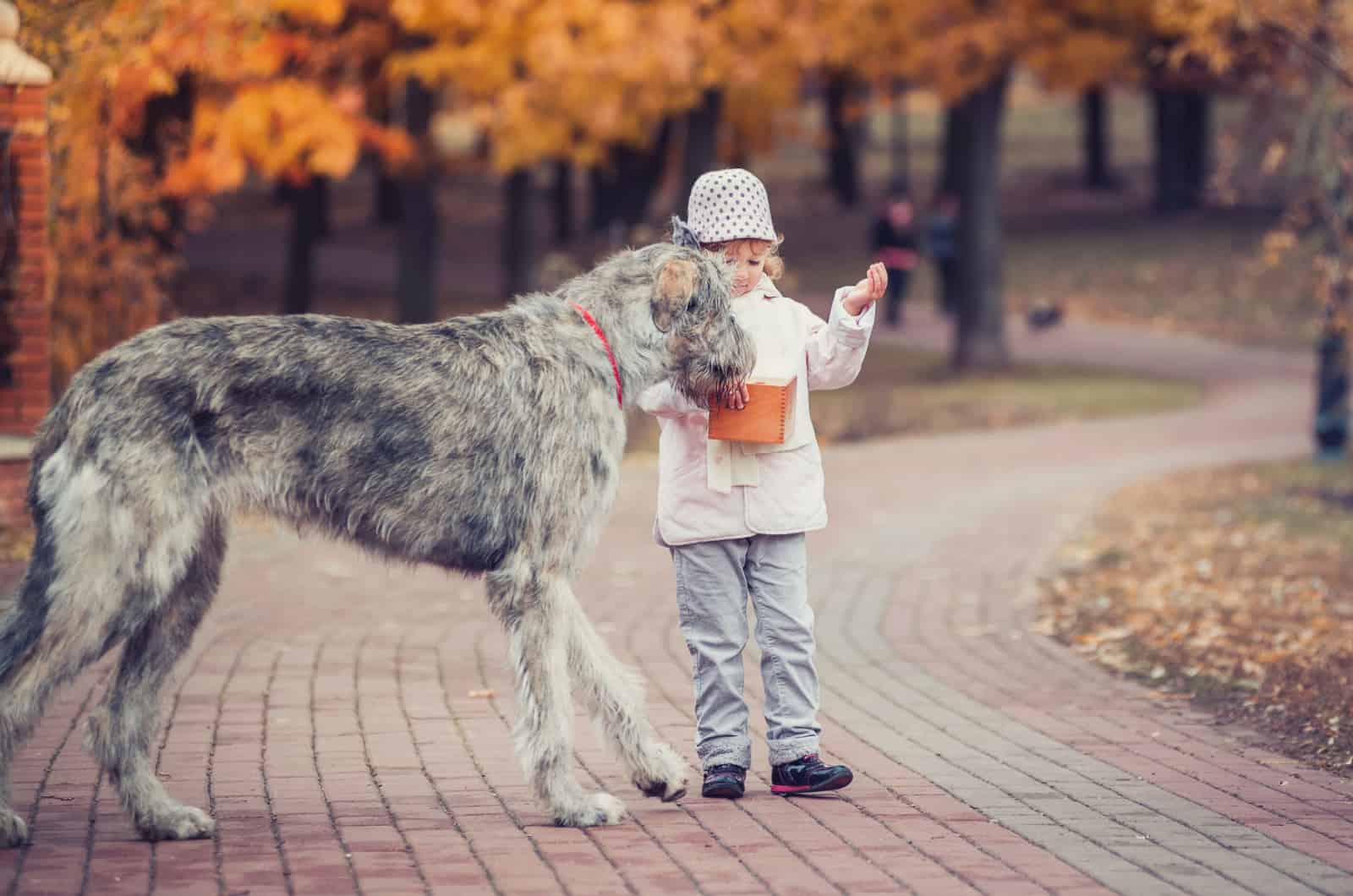
The perfect home for an Irish Wolfhound is a house with an enclosed yard that is large enough for him to gallop around on, as that is what this athletic sighthound does best. He was bred and historically employed for sight and chase hunting, as evidenced by the length of his legs and back, the breadth of his chest, and the strength of his limbs and physique.
Is The Irish Wolfhound The Largest Dog Breed On The Planet?
According to the Irish Wolfhound Club of America, this is indeed the tallest breed in the world.
Irish Wolfhound males have a minimum height of 32 inches at the shoulders, and if they were to stand upright on their hind legs, they would be around seven-foot-tall.
However, this only applies to their height, as an Irish Wolfhound weighs fairly little for their frame. You could consider them to be pretty slim, with their weight “only” going up to 140 pounds. For comparison, Great Danes regularly weigh up to 170 pounds, and some English Mastiffs can even be over 200 pounds!
The Final Word
The Irish Wolfhound growth chart is a terrific tool to have if you own one of these extraordinarily huge canines. It is something that can help you monitor your dog’s growth and development.
This dog weight chart makes it simple for you to monitor your Wolfhound’s development at any time just by cross-referencing the parameters from the chart with your pup’s true weight.
Additionally, the growth chart can help you focus your efforts on enhancing your Irish Wolfhound’s health. If you manage to identify a more serious health problem early on, you’ll have a better chance of effectively treating it.
Being underweight or overweight might occasionally be an indication of a more serious health problem.
Every pet owner wants a healthy dog, and this little utility can help you make sure that it is.
Read next: The Top 4 Irish Wolfhound Breeders In The U.S. Of 2022
